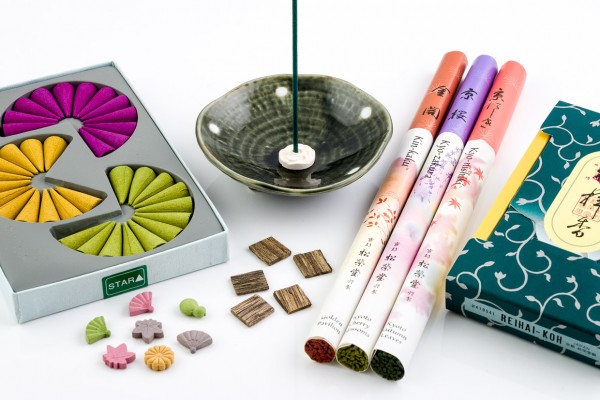>> Japanese Incense products in our shop
The Essence of Japanese Incense
Japanese incense, or "koh" (香), is a significant cultural element with a history spanning over a thousand years. Renowned for its delicate and refined fragrances, Japanese incense is used in religious rituals, meditation, and daily life to create a calming and serene atmosphere.
Historical Roots
The introduction of incense to Japan is traced back to the 6th century via China and Korea, primarily for use in Buddhist rituals. Over time, the Japanese developed their unique incense culture, notably during the Heian period (794-1185), when the aristocracy began using incense in daily life and cultural practices.
Types of Japanese Incense
Japanese incense comes in various forms, including sticks, cones, and coils. Two main categories dominate:
- Traditional Incense (Koh): Made from natural ingredients like agarwood, sandalwood, cinnamon, and clove, traditional incense sticks are often used in religious ceremonies and temples.
- Everyday Incense: Brands like Nippon Kodo's "Morning Star" or Shoyeido are offering accessible incense for daily use, available in a variety of scents with high quality ingredients.
Craftsmanship and Production
The production of Japanese incense involves meticulous craftsmanship. Artisans blend natural materials, knead them into a dough-like consistency, and then extrude them into sticks or molds for cones and coils. The process ensures a consistent burn and a balanced release of fragrance.
Cultural Significance
Incense plays a pivotal role in various Japanese cultural practices:
- Kōdō (The Way of Fragrance): This is the traditional Japanese art of appreciating incense. Participants engage in "listening" to incense, which involves identifying scents through mindful smelling.
- Religious Practices: Incense is a staple in Shinto and Buddhist rituals, symbolizing purification and the presence of the divine.
- Everyday Use: Many Japanese homes use incense to freshen the air and create a peaceful ambiance, especially during meditation or relaxation.
Modern Usage
Today, Japanese incense is celebrated globally for its quality and variety. Brands like Shoyeido, Baieido, and Nippon Kodo continue to innovate while preserving traditional methods. Their products are popular not only for spiritual and meditative purposes but also as luxury home fragrances.
Conclusion
Japanese incense is more than just a fragrant product; it is a bridge between the past and present, blending tradition with modern living. Whether used in religious rituals, cultural practices, or everyday life, the gentle and sophisticated scents of Japanese incense offer a sensory journey into the heart of Japanese culture.

